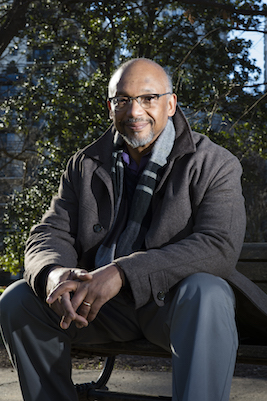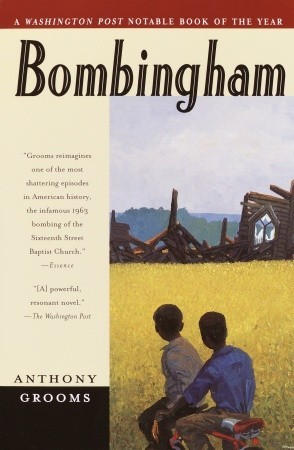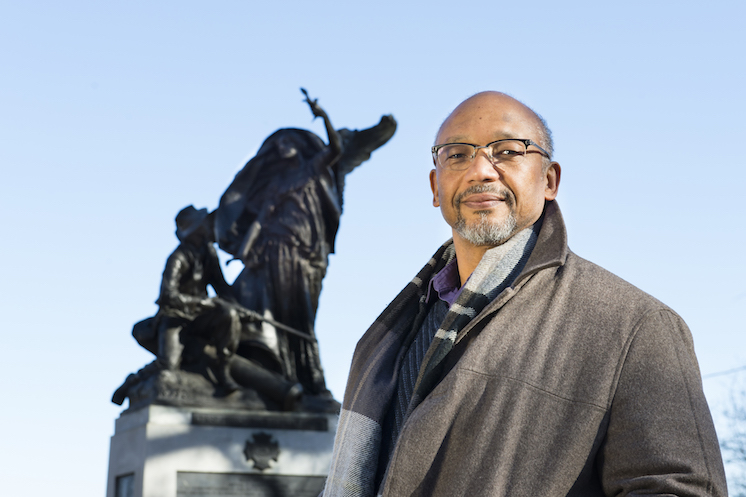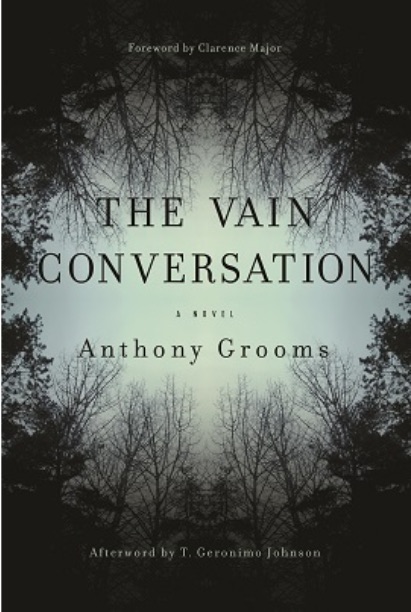

KENNESAW, Ga. | Feb 2, 2018
Novelist Tony Grooms tells stories from history

In his first novel, the award-winning “Bombingham,” Kennesaw State writing professor Tony Grooms drew parallels between the moral challenges presented by the Vietnam War and the fear and terror African-Americans in Birmingham, Ala. experienced during the civil rights movement as they faced bombings, water hoses and attack dogs.
In his second novel, “The Vain Conversation,” scheduled for release March 1, Grooms turns once again to the well of history, this time drawing his story and characters from an unsolved case of two African-American couples lynched in 1946 by a mob of whites at Moore’s Ford Bridge in Walton County, Ga. The novel’s release comes just one month after both Georgia and federal investigators officially closed their inquiries into the murders, determining that none of the known suspects are still alive.
While the civil rights-era bombings, marches and protests in Birmingham and the Walton County lynchings are facts of history, Grooms says he didn’t set out to write history.
“I always say that the historical novel is not history,” said Grooms, who joined Kennesaw State in 1995 and now directs its Master of Professional Writing program. “You need to go to historians to get history. But, of course, historians even debate the facts and the meaning of history. What I’m really after is a discussion about what it means and what it feels like to be there in that space (where history is being made). How does it feel to be an African-American in the Jim Crow South or swept up in the civil rights movement?”
Grooms’ telling of some of those stories has earned him critical acclaim and two Lillian Smith Awards for fiction for his collection of short stories titled “Trouble No More,” and “Bombingham,” which were selected as All Georgia Reads books. The latter was also selected as the common reader for Washington, D.C. in 2013. He was a Hurston-Wright Foundation Legacy Award finalist, and is an Arts Administration Fellow from the National Endowment for the Arts, a Fulbright Fellow and a Yaddo Fellow. Also the author of a book of poetry titled “Ice Poems,” Grooms has works published in a number of anthologies and literary journals.
Creating fictional characters on the periphery of history has allowed Grooms to explore their humanity as they confront the issues and circumstances of their times, the actions and motives of people who would do them harm and their own demons.

“What happens outside your house impacts what happens inside your house,” Grooms said, noting that the instability in their household set the stage for the children’s gravitation towards the movement in defiance of their parents.
Telling history through fiction enables the writer to capture the ambivalence that is often present in human interactions, Grooms said. He cited a scene in “Bombingham” in which Josie’s father, seeking to get her released from police detention after a protest, encounters a white officer guarding the young protestors. Rather than act enraged that his child was locked up or emphasizing his pedigree as an educator and former Army infantryman, he chose to become subservient in the face of the white officer’s frustrations at being in the situation, at having an unfaithful wife and at having his sacrifice during WWII disregarded by protestors. When the father went down on his knees, the embarrassed officer commanded him repeatedly to “get up.”
“With that scene, I’m trying to complicate the matter of race relations because it is complicated,” Grooms said. “Sometimes you miss the nuances in the factual telling of history.”

Even though Grooms’ newest novel is rooted in a horrific lynching in which two black couples are tied to trees and shot 60 times, he uses the crime to probe ambivalence in the lives of the perpetrators, the victims and a 10-year boy who witnessed it.
In a preview of the book, New York Times best-selling author Ron Rash noted, “The Vain Conversation” vividly evokes the horrors of American racism, but [Anthony Grooms] never denies the humanity of his characters, whether black or white, young or old. His novel achieves what only the best literature can give us: it refuses too-easy consolations or too-easy condemnations.”

“But Luellen,” he occasionally argued, “all white people aren’t bad. And even if they were, you can’t think that way. For one thing, it is not Christian, and for another it will eat you up. Hating eats you up just as badly as being hated.” She often dismissed him with a wave of her hand or countered that hate hadn’t eaten up the whites. They seemed to be doing mighty well hating.
Luellen, a proud, educated woman, had no patience for the way whites in the South treated blacks. She kept her own scrap book chronicling what was happening to blacks. Grooms writes:
The book was over a hundred pages and still she added to it. Nearly every time The Defender or The Baltimore Afro-American came, she found an article of a lynching or riot or rape to paste onto its pages. Bertrand watched her thumb through the book, pausing momentarily over the pictures of grotesque corpses of black men, burned, chained to trees, mutilated. It seemed they fascinated more than horrified her. “It is a mystery,” she had once blurted out to him. “What is it about the whites that make them do this kind of thing?” “It’s not just white people,” he had argued.
Grooms said his novels do not fall into the category of ‘race redemption’ novels that make redemption look easy.
“If that was the case, we would be living in an American society that is redeemed for its racial violence,” he said. “My take is that there is redemption, but you have got to work for it. There is a process and it starts with recognizing that there is a problem.”
— Sabbaye McGriff
Photos by Lauren Kress; Video by Rob Witzel
A leader in innovative teaching and learning, Kennesaw State University offers undergraduate, graduate, and doctoral degrees to its more than 51,000 students. Kennesaw State is a member of the University System of Georgia with 11 academic colleges. The university's vibrant campus culture, diverse population, strong global ties, and entrepreneurial spirit draw students from throughout the country and the world. Kennesaw State is a Carnegie-designated doctoral research institution (R2), placing it among an elite group of only 8 percent of U.S. colleges and universities with an R1 or R2 status. For more information, visit kennesaw.edu.